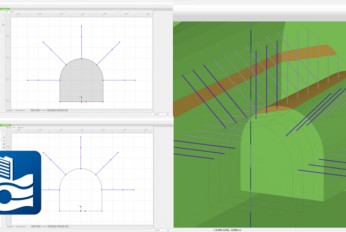
An 8.2 magnitude earthquake hit northern Chile on Tuesday evening at 20:46 local time about 86km north-west of the mining area of Iquique, prompting the Pacific Tsunami Warning Cente to issue tsunami alerts for Chile, Peru, Nicaragua, and Ecuador. Also, according to the Center a tsunami watch is in effect for Colombia, Panama, and Costa Rica.
The April 1st, 8.2 earthquake came as a result of thrust faulting at a shallow depth of 20km near the Chilean coast. The intensity of the earthquake was such, that it was even felt as a 4.5 magnitude event in the Bolivian capital, located 470 kilometers away. Eight major aftershocks have been recorded, including a 6.2 temblor. Seismologist at the University of Chile, Mario Pardo says "More aftershocks and even a larger quake could not be ruled out". But April 1st tremor did not came as a surprise. In the last weeks, USGS has been recording a significant increase in the seismic activity in the area. On March 16, 2014 a M6.7 earthquake occurred, having a very similar faulting mechanism with the 8.2 quake, and was followed by over 60 shakings of M4+ and 26 events of M5+. Also, three significant shakings of M6.2 were recorded on March 17, March 22, and March 23.
Major damages have not yet been reported, while five people have been reported dead. The nearby cities of Iquique, Tarapaca, Arica, and Antofagasta were ordered to be evacuated, but landslides blocking the road network, caused traffic jams among residents evacuating the coast. Also, many copper mines located in the area of Iquique have not so far reported damages. Tsunami alerts were issued right after the earthquake and waves of about 2meters were observed 4 minutes after the event in the coastal area of northern Chile as well as in the town of Boca del Rio in Peru.
Sources: BBC, EpochTimes, USGS
Want to read more like this story?

M 6,7 earthquake struck Chile
Jan, 21, 2019 | NewsA 6.7 magnitude earthquake struck the central and north coast of Chile causing structural damage, la...

Massive earthquake hits Alaska: Tsunami warning issued
Jul, 22, 2020 | NewsA massive M 7.8 earthquake that hit off the coast of Alaska, forced authorities to issue a tsunami...

8.4-Magnitude Quake Hit Chile
Sep, 18, 2015 | NewsA strong earthquake shook the central coast of Chile near Santiago, claiming the lives of at least t...

M8.2 earthquake struck off the coast of Alaska
Jul, 28, 2021 | NewsA massive earthquake struck off the coast of Alaska prompting a tsunami alert for a large part of t...

M 7.5 earthquake hit Alaska triggering tsunami warnings
Oct, 19, 2020 | NewsA tsunami warning was issued after a powerful earthquake hit Alaska's southern coast. The M 7.5...

Powerful earthquake struck Mexico: At least one fatality
Sep, 08, 2021 | NewsAt least one person died after a M 7.0 earthquake hit southwestern Mexico on September 8, 2021. Th...

Massive earthquake struck off the coast of New Zealand
Jun, 18, 2020 | NewsA M 7.4 earthquake struck off the coast of New Zealand raising concerns about a potential tsunami....

M 7.0 earthquake struck Papua New Guinea: Tsunami warn issued
Jul, 17, 2020 | NewsA strong earthquake (M 7.0) struck Papua New Guinea and authorities immediately issued an alert abo...

Simulation: Tsunami In Crete Overwhelms The Mediterranean
Aug, 31, 2015 | NewsPossible strong earthquake in Crete would cause a devastating tsunami that could flood the coast at...
On This Day
Trending

2023 Geotechnical job market analysis

World's most intricate subway networks

The causes of the Whaley Bridge dam failure

PLAXIS 2024.1 New release is out!

China: The longest underwater highway tunnel is open to vehicle traffic

Underground tunnel and Yonge Station project in downtown Toronto

Rockfall Mitigation Project in West Virginia


